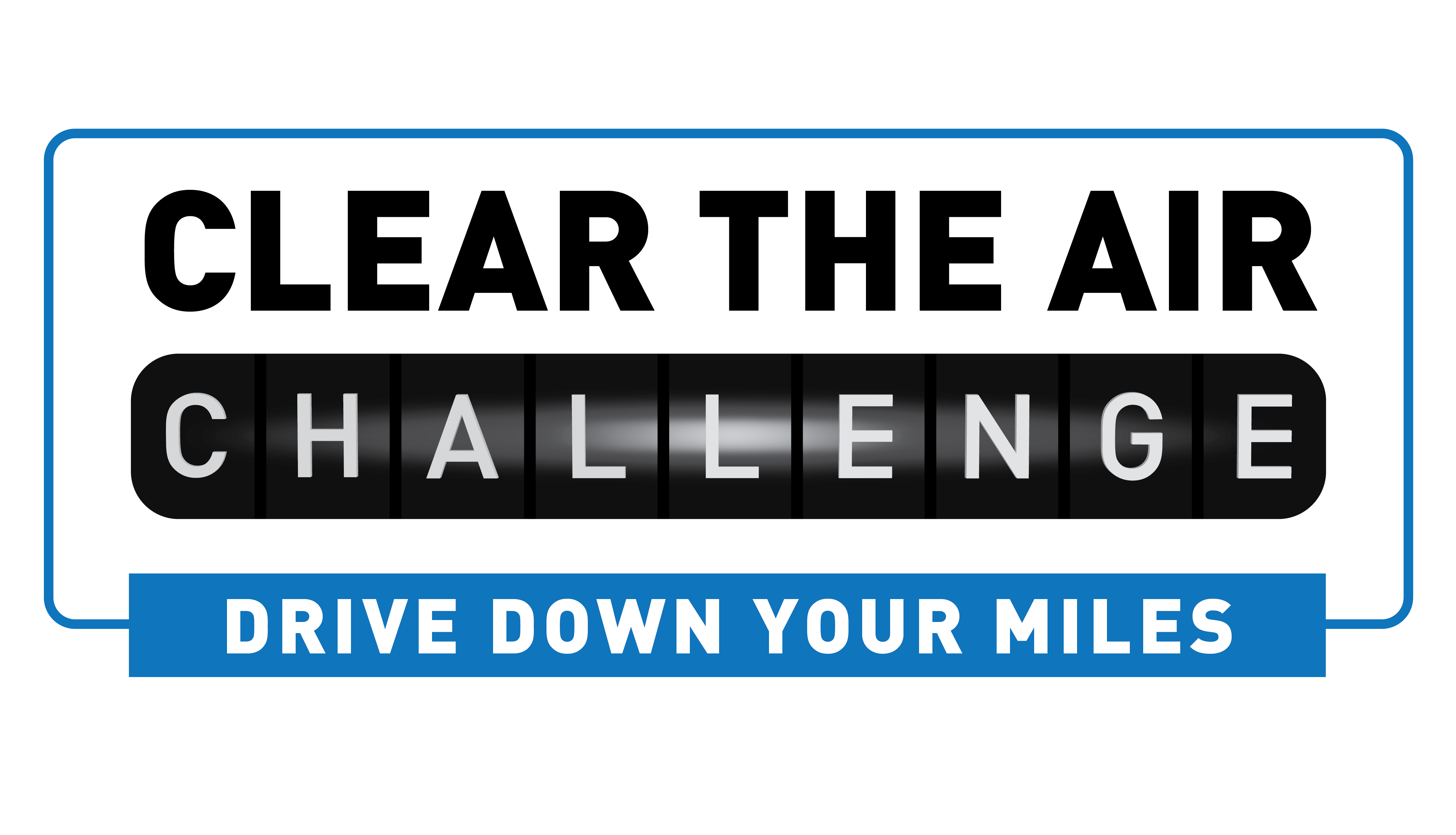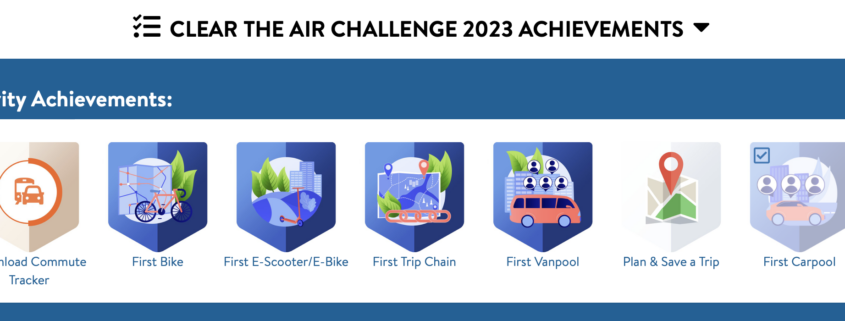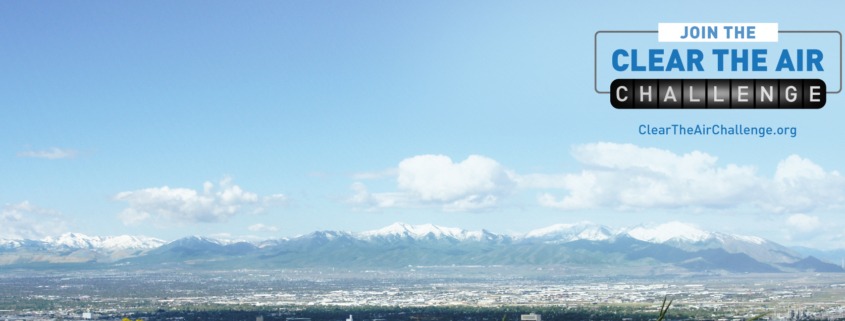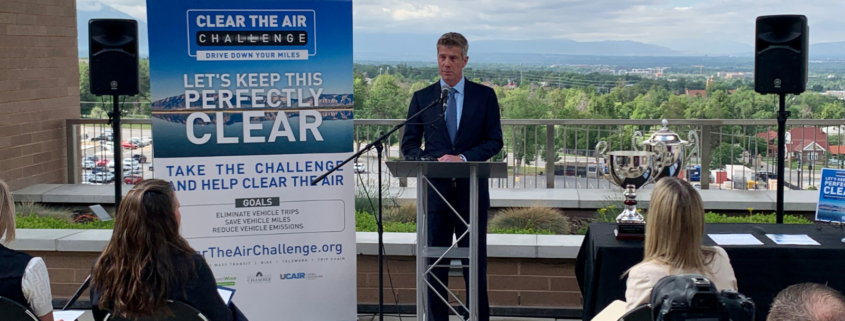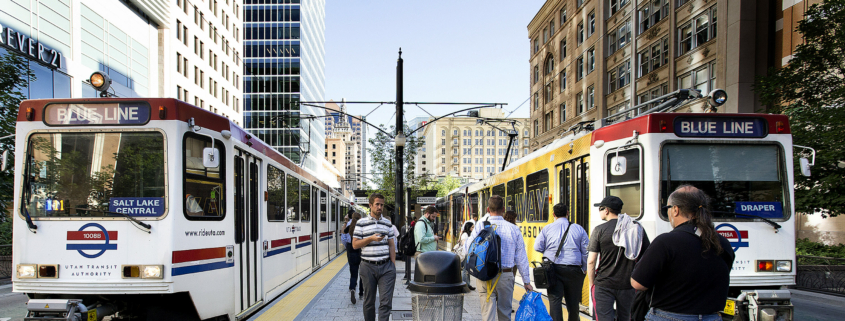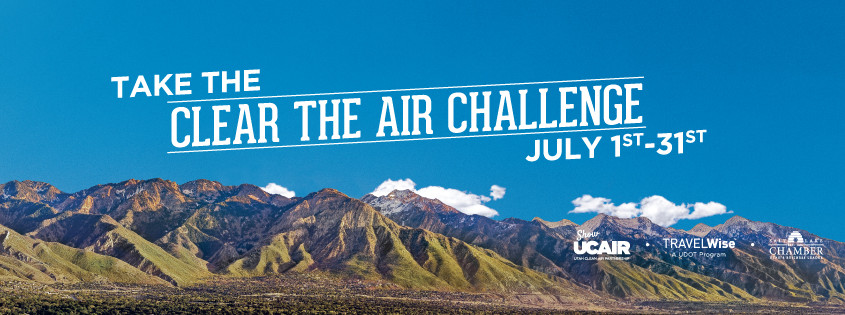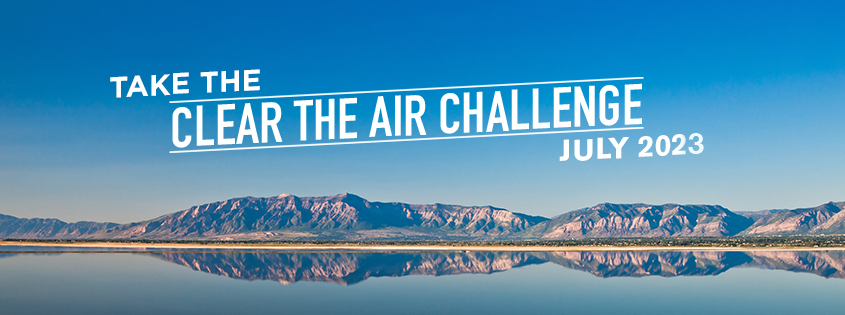How Do Prizes and Achievement Badges Work?
If you’ve participated in the Clear the Air Challenge before, you might remember that as you log your TravelWise trips throughout the month, you unlock achievement badges. These badges show what you’ve accomplished during the Challenge, and they also serve as entries into our weekly opportunity drawings. Long story short: the more badges you unlock, the better chance you have to win.
Achievement Badges
There are three types of badges that participants can earn during the Challenge. The first type is activity achievements, which are automatically unlocked as trips are logged. These badges include achievements like “First Carpool” and “Log 10 Trips.”
The second type of badge is action achievements, which are unlocked after completing various actions such as liking the Challenge’s Facebook account or sharing on social media. In order to unlock these badges, participants must fill out their corresponding forms after completing the action.
The third type of badge is skill achievements. These include achievements like the “TravelWise Pro” and “UCAIR Follower” badges and are awarded when participants learn more about the Challenge or other educational topics. Similar to the action achievements, these badges require completion of their corresponding quizzes prior to unlocking.
To view available achievement badges and their forms, visit the TravelWise Tracker homepage and scroll down. You can also view your earned badges on your dashboard.
Prizes
There are several opportunities to win prizes during the Clear the Air Challenge. Each week, we randomly select several participants to win a gift card to a local restaurant or business, tickets to area attractions and more. Each badge earned during that week counts as one entry into the weekly drawing, and winners are notified via email.
Additionally, at the end of the Challenge, the top three participants who save the most emissions will win grand prizes:
First Place: Utah Camping Kit
- Utah State Parks Pass
- REI Two-Person Backpacking Tent
- IGLOO Cooler
Second Place: A Day at the Zoo
- Hogle Zoo Duo Annual Membership
- Portable Cooler
Third Place: Picnic in the Park
- Pendleton Portable Picnic Blanket
- $50 Smith’s Gift Card
Note: The Clear the Air Challenge is as accurate as the data entered by participants. Therefore, entries are diligently monitored to ensure that Challenge results are accurate. If there is an entry in question, the participant is contacted and the entry is verified. Additionally, the grand prizes must be picked up in person at the Salt Lake Chamber office.
If you have further questions about the Challenge, achievement badges or prizes, contact us at info@cleartheairchallenge.org. We wish you the best of luck!
